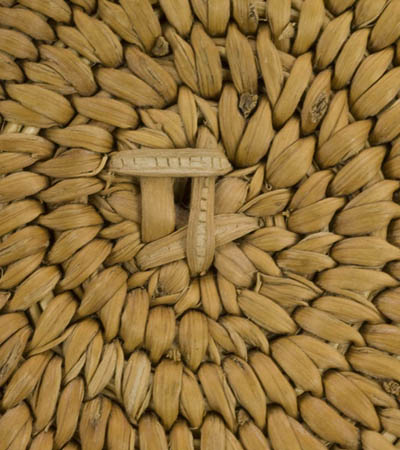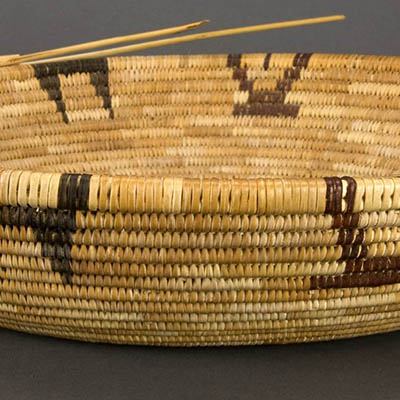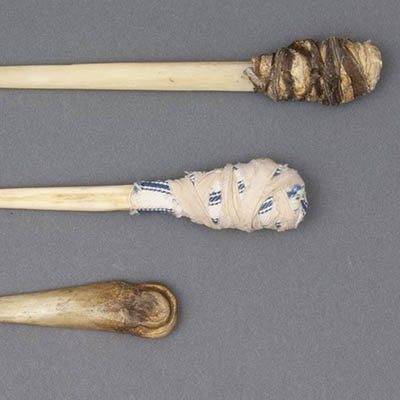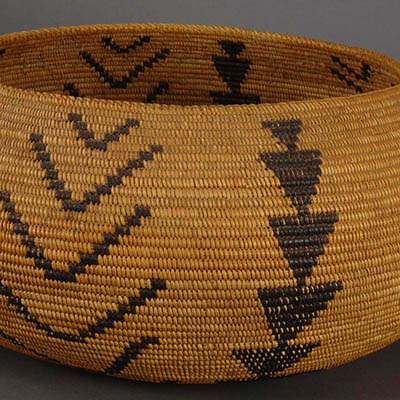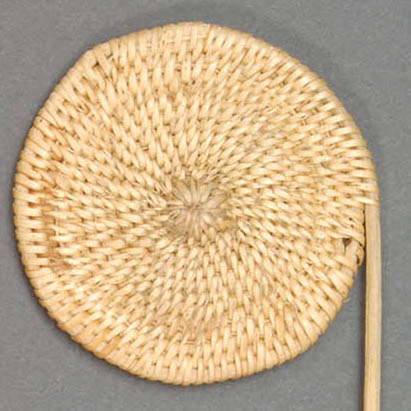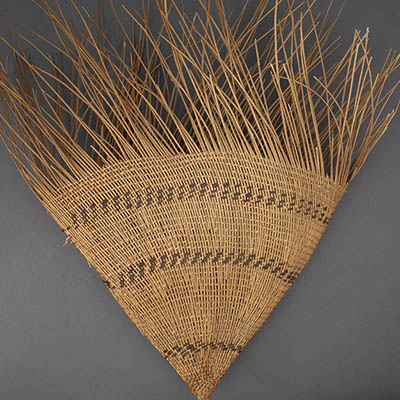Weaving Process
Baskets in the Yosemite region are made by weaving together plant fibers using a variety of methods. The two primary elements of a woven basket are the warp and the weft. Warps are the strands that make up the foundation of the basket, while the wefts are the sewing strands that are woven in to bind the basket together. Some of the more common plant types used to make baskets in the Yosemite region include willow, sedge root, bunchgrass, sourberry, redbud, and bracken fern root.
Basket weaving is done using one of two techniques, twining or coiling. The type of basket being produced dictates which technique should be employed. Twining traditionally has been used to produce winnowing trays, burden baskets, cradle baskets, storage baskets, and seed beaters, whereas coiling, which can result in a tighter weave and more detailed patterns, has been used to produce cooking baskets, eating bowls, storage baskets, gift baskets, and sifting trays.
There are several variations of twining, but in general, a twined basket is made by twisting two or more weft strands around the warp strands, thus binding them together. A twined basket can be started using either the fan start, in which the warps are gathered at one end and fanned out, or the radial start, in which warps are arranged radially like the spokes of a wheel.
Coiling is done by sewing strands of flexible material around a spiraling foundation of bunchgrass or one or more willow rods. Coiled baskets are started in what will be the basket’s center. There are multiple techniques for starting a basket such as the clockspring start, resulting in a circular basket, or a bent-rod start, resulting in an ovular basket. Once a basket is started, weaving continues in a spiral by threading sewing strands around the foundation material of the current coil and all or a portion of the foundation material of the previous coil.

